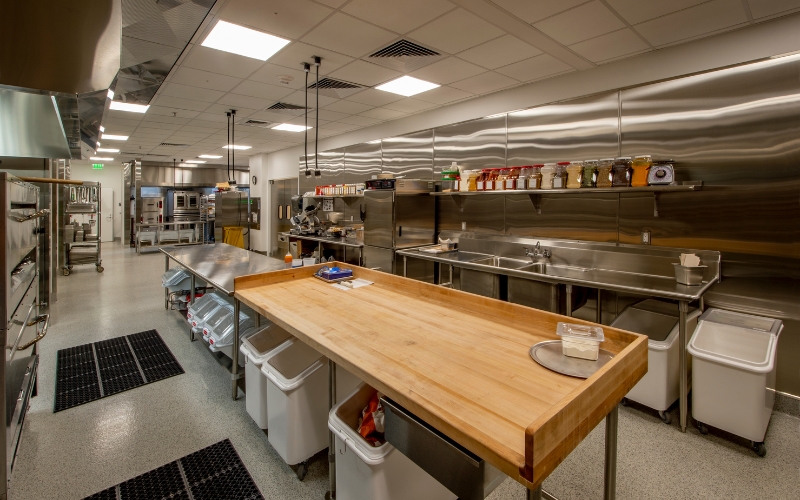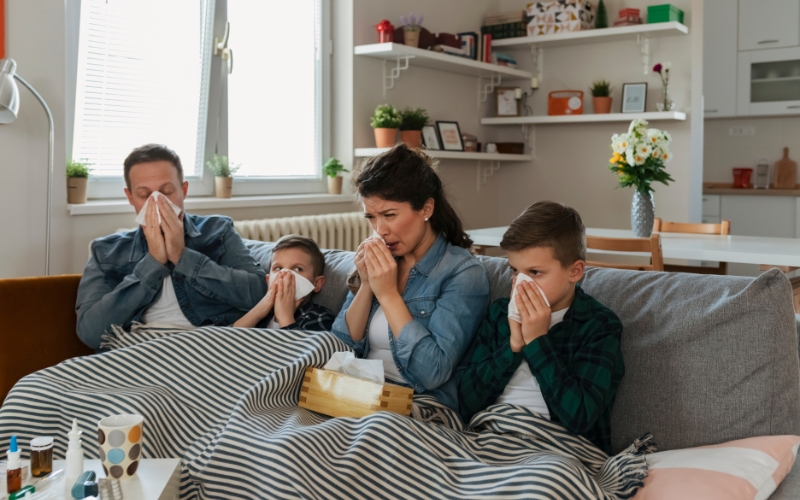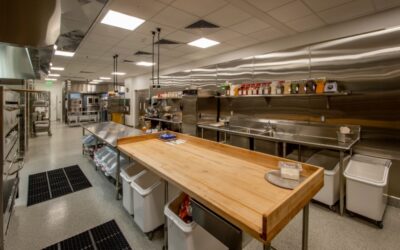Listeria contamination has once again made headlines following the Boar’s Head outbreak. A lapse in sanitation led to multiple deaths and illnesses. This listeria outbreak traced back to a production facility in Virginia is a stark reminder of how quickly Listeria can increase in food processing environments and the importance of air purification to combat it.
Despite best efforts to sanitize surfaces, airborne bacteria remain a critical challenge that traditional cleaning methods can’t fully address. Advanced solutions like Synexis®’ Dry Hydrogen Peroxide (DHP®) offer a proactive way to combat these risks and enhance food safety.
Listeria Outbreaks: A Wake-Up Call
In 2023, and 2024, Boar’s Head faced a major Listeria outbreak linked to its deli meats, particularly liverwurst. This outbreak resulted in multiple deaths an illness in many others across multiple states. After investigating, it was determined that a facility in Jarratt, Virginia was plagued by sanitation issues, including meat residue, mold, and improper handling of raw products. Despite the company’s recall of over 7 million pounds of meat, the outbreak underscored the vulnerability of food processing plants to airborne pathogens.
Listeria monocytogenes, the strain responsible for the outbreak, is especially dangerous in food production settings due to its ability to survive and spread in cold, moist environments. These conditions are prevalent in many processing facilities. Airborne particles carrying the bacteria can contaminate equipment, surfaces, and products, even in areas where routine cleaning is performed. This means that Listeria is more than just a surface concern. It’s also an airborne threat.
Addressing Airborne Listeria Outbreak with Air Purification Technology
While surface sanitation remains essential, the Boar’s Head incident reveals that airborne pathogens play a significant role in spreading Listeria. This is where air purification systems using DHP come into play. Synexis’ DHP technology continuously reduces airborne and surface pathogens by dispersing low levels of hydrogen peroxide into the air. This technology is proven to neutralize contaminants by disrupting their cellular function, rendering them mostly harmless.
Here’s why DHP is so effective in food processing facilities:
- Continuous Protection: Unlike traditional cleaning methods, which only work during scheduled intervals, DHP works 24/7/365. This constant presence helps present airborne pathogens from settling on surfaces and contaminating food products between cleaning cycles.
- Reaching Hard-to-Clean Areas: As seen in the Boar’s Head outbreak, certain areas are difficult to sanitize regularly. DHP can permeate inaccessible spaces, ensuring that no corner of the facility is left vulnerable to bacteria growth.
- Safe for Use in Occupied Spaces: One key benefit of DHP is that it’s safe to use while workers are present. This allows the system to run continuously in the air without disrupting daily operations. The pathogens are then in an environment with little chance to thrive.
- Surface Protection: Listeria can settle on surfaces after becoming airborne, contaminating products and packaging areas. DHP works in the air and contributes to cleaner surfaces by neutralizing bacteria as they land.
Preventing Another Outbreak: A Multi-Layered Approach
The sanitation lapses at the Boar’s Head plant, which included mold, meat residue on food-contact surfaces, and improper handling of raw materials, demonstrate the need for a comprehensive approach to food safety. Addressing airborne bacteria should be a vital component of any food processing facility’s hygiene strategy, especially when dealing with pathogens that can survive in challenging environments.
By incorporating air purifications, such as Synexis, alongside regular sanitation protocols, food processing facilities can significantly reduce the risk of contamination. This multi-layered approach ensures that surfaces and the air are continuously protected. Attacking on multiple fronts offers a stronger defense against outbreaks like the one we’ve seen recently.
Prioritizing Air Quality
The Boar’s Head outbreak has shown how devastating contamination can be. This is true not only for public health but also for a company’s reputation and operations. To prevent future outbreaks, food producers must adopt a holistic approach to hygiene that includes effective air purification. Technologies like Synexis’ DHP offer a robust solution by targeting airborne pathogens and complementing manual surface sanitation efforts. By taking proactive steps to purify the air, food processing facilities can create safer environments and reduce the risk of costly recalls, legal issues, and, most importantly, consumer harm.
To speak with an IAQ expert from Synexis, fill out this form and we’ll be in touch as soon as possible.
And to learn more about Synexis, click here.







